Malayan Tiger
- February 8, 2024
- 0 comment
The Malayan tiger, scientifically known as Panthera tigris jacksoni, is a captivating subspecies of tiger native to the lush landscapes of the Malay Peninsula and parts of southern Thailand. Known for its stunning coat adorned with distinctive black stripes against a vibrant orange backdrop, the Malayan tiger holds a significant place in both the ecological and cultural tapestry of its habitat. As one of the smaller tiger subspecies, it boasts a robust physique with powerful limbs and sharp claws, finely tuned for navigating its tropical environment and efficiently hunting its prey. These solitary predators primarily inhabit dense forests and grasslands, where they rely on stealth and ambush tactics to capture their preferred diet of deer, wild boar, and smaller mammals.
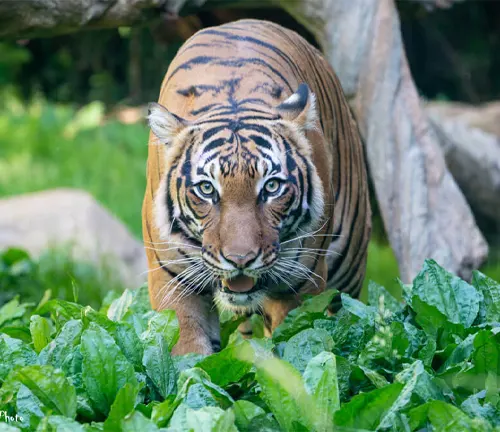
Despite their elusive nature, the Malayan tiger faces a myriad of threats, including habitat loss, poaching, and human-wildlife conflict, which have contributed to its critically endangered status. Efforts to protect and conserve these majestic creatures are crucial not only for their survival but also for maintaining the delicate balance of their ecosystems. Through education, awareness, and concerted conservation initiatives, there remains hope for securing a future where the iconic Malayan tiger continues to roam the forests of Southeast Asia, symbolizing strength, resilience, and the rich biodiversity of the region.
| Specification | Details |
|---|---|
| Scientific Name | Panthera tigris jacksoni |
| Common Name | Malayan Tiger |
| Habitat | Dense tropical forests, grasslands |
| Distribution | Malay Peninsula, southern Thailand |
| Coat Color | Orange with black stripes |
| Size | Medium-sized |
| Weight | Approximately 100-140 kg (220-310 lbs) |
| Length | 2.5 – 3 meters (8 – 10 feet) from head to tail |
| Diet | Deer, wild boar, small mammals |
| Hunting Behavior | Solitary, stealthy, ambush predator |
| Reproduction | Gestation period: 3-4 months; Litter size: 2-4 |
| Conservation Status | Critically endangered |
| Threats | Habitat loss, poaching, human-wildlife conflict |
| Conservation Efforts | Anti-poaching patrols, habitat restoration |
| Cultural Significance | Symbol of strength and protection |
| Importance in Ecosystem | Apex predator, maintains ecological balance |
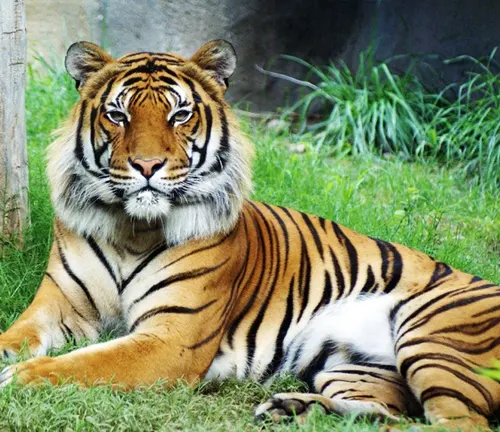
The Malayan tiger (Panthera tigris jacksoni) is a sub-species of tiger native to the Malay Peninsula and parts of southern Thailand. As one of the smallest tiger subspecies, the Malayan tiger is known for its distinctive coat pattern and adaptations to its tropical habitat.
Habitat and Distribution
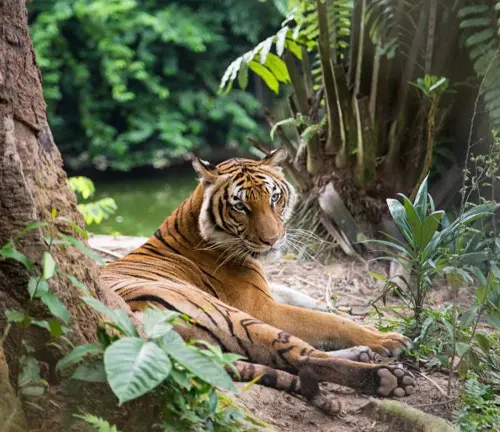

The Malayan tiger (Panthera tigris jacksoni) is primarily found in the lush habitats of the Malay Peninsula and parts of southern Thailand. These majestic creatures inhabit a variety of ecosystems within their range, including dense tropical rainforests, mangrove swamps, and grasslands. They are well-adapted to living in diverse environments, from lowland plains to mountainous regions.
In terms of distribution, Malayan tigers historically roamed across a broader range encompassing much of the Malay Peninsula and extending into southern Thailand. However, due to habitat loss and fragmentation caused by human activities such as deforestation, urbanization, and agricultural expansion, their range has significantly contracted over time.
Today, Malayan tigers are primarily confined to fragmented patches of suitable habitat, including protected areas such as national parks and wildlife reserves. These areas provide essential resources for their survival, including prey species and suitable shelter.
Physical Characteristics



The Malayan tiger, Panthera tigris jacksoni, exhibits several distinctive physical characteristics that set it apart from other tiger subspecies. Here are some key features:
- Coat Color and Pattern: Malayan tigers have a striking coat coloration characterized by a rich orange background with black stripes. These stripes vary in width and pattern, serving as effective camouflage in their natural habitat of dense tropical forests and grasslands.
- Size and Build: While considered one of the smaller subspecies of tigers, Malayan tigers still possess a robust and muscular build. Adult males typically weigh between 100 to 140 kilograms (220 to 310 pounds), while females are slightly smaller. They have strong, well-developed limbs and shoulders, enabling them to take down prey efficiently.
- Head and Facial Features: The head of a Malayan tiger is broad and rounded, with a distinctive muzzle adorned with prominent whiskers. Their eyes are relatively small and set forward on the face, providing excellent depth perception for hunting in low-light conditions.
- Tail: Like all tiger subspecies, Malayan tigers have a long, muscular tail that helps them maintain balance and agility while navigating their environment. Their tails are typically adorned with dark rings and end in a white tip, which aids in visual communication with other tigers.
- Dental Structure: Malayan tigers possess a set of powerful jaws lined with sharp, conical teeth designed for tearing through flesh and bone. Their canine teeth are particularly large and formidable, allowing them to deliver lethal bites to their prey.
- Paws and Claws: The paws of Malayan tigers are large and padded, providing excellent traction and stealth when stalking prey. Their retractable claws remain sheathed when not in use, helping to keep them sharp for hunting and self-defense.
Diet and Hunting Behavior
The Malayan tiger, Panthera tigris jacksoni, is a carnivorous apex predator with a diverse diet and specialized hunting behavior. Here’s an overview of its diet and hunting behavior:
Diet
Malayan tigers primarily prey on a variety of animals, including deer, wild boar, tapirs, and smaller mammals such as monkeys and rodents. Their diet may also include livestock in areas where human settlements encroach upon their habitat. Malayan tigers are opportunistic hunters and will consume whatever prey is readily available in their territory.

Hunting Behavior
Malayan tigers are solitary hunters and predominantly hunt during the cover of night, utilizing their keen senses of sight, smell, and hearing to locate and ambush prey. They are highly adaptable predators and employ a variety of hunting techniques depending on the terrain and availability of prey.
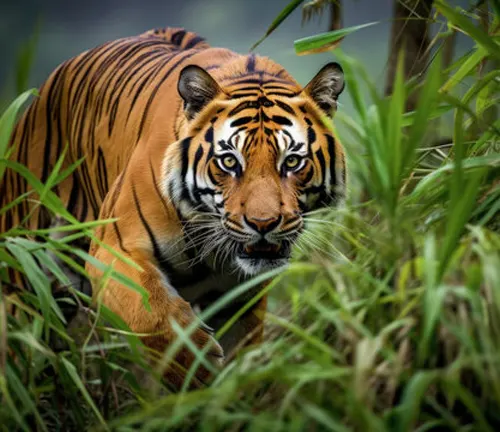

- Stalking
Malayan tigers are stealthy stalkers, patiently waiting in concealment until they spot a suitable prey animal. They use their camouflage to blend into the surrounding vegetation, minimizing the chances of detection by their prey. - Ambush
Once within striking distance, Malayan tigers rely on a burst of speed and agility to close the gap between themselves and their unsuspecting prey. With powerful leaps, they pounce on their target, using their weight and strength to bring it down swiftly. - Suffocation Bite
Malayan tigers typically deliver a suffocating bite to the throat or neck of their prey, aiming to incapacitate it quickly and minimize the risk of injury to themselves. Their sharp canine teeth and strong jaws are well-suited for delivering lethal bites. - Drag and Conceal
After making a kill, Malayan tigers will often drag their prey to a secluded location to consume it away from scavengers or potential competitors. They may also cover the carcass with leaves and vegetation to conceal it from other predators.
Reproduction and Life Cycle
The reproduction and life cycle of the Malayan tiger, Panthera tigris jacksoni, are fascinating aspects of its biology. Here’s an overview of how these majestic big cats reproduce and raise their young:


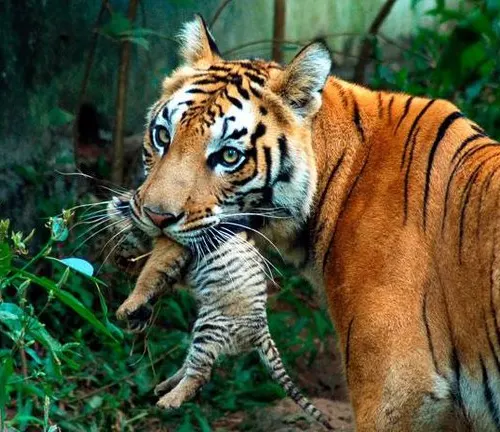
- Mating: Malayan tigers typically reach sexual maturity between the ages of 3 to 4 years old. During the breeding season, which can occur year-round but peaks during the cooler months, males establish territories and compete for access to females. Mating occurs through a series of courtship behaviors, including vocalizations, scent marking, and physical displays.
- Gestation: After successful mating, female Malayan tigers undergo a gestation period of approximately 3 to 4 months, during which the fertilized eggs develop into embryos. Gestation typically results in a litter size of 2 to 4 cubs, although larger litters are rare.
- Birth and Cub Rearing: Female Malayan tigers give birth to their cubs in secluded den sites, such as dense vegetation or caves, to provide protection from predators and disturbances. Newborn cubs are blind and helpless, weighing only a few pounds at birth. The mother provides care and protection for her cubs, nursing them with her milk and keeping them warm until they are strong enough to venture outside the den.
- Dependency Period: Malayan tiger cubs are dependent on their mother for nourishment and protection for the first few months of their lives. During this time, they gradually gain strength and coordination, learning essential skills such as hunting and social behaviors through play and observation.
- Weaning and Independence: Around the age of 6 to 8 weeks, Malayan tiger cubs begin to transition from milk to solid food, initially consuming regurgitated meat provided by their mother. As they grow older, they gradually wean themselves off milk and start hunting small prey under their mother’s guidance. By the age of 18 months to 2 years, Malayan tiger cubs become fully independent and leave their mother to establish their territories.
- Sexual Maturity and Reproduction: Malayan tigers reach sexual maturity between the ages of 3 to 4 years for females and 4 to 5 years for males. Once mature, they may seek out mates and contribute to the continuation of their species through breeding and raising their own offspring.
Conservation Status
The conservation status of the Malayan tiger, Panthera tigris jacksoni, is a matter of grave concern, as it is currently listed as critically endangered by the International Union for Conservation of Nature (IUCN). This designation reflects the alarming decline in the population of Malayan tigers and the urgent need for conservation action to prevent their extinction.
Several factors contribute to the critically endangered status of Malayan tigers:


- Habitat Loss and Fragmentation: Rapid deforestation and conversion of natural habitats for agricultural expansion, urbanization, and infrastructure development have led to significant loss and fragmentation of the Malayan tiger’s habitat. Fragmentation isolates tiger populations, reduces genetic diversity, and restricts their ability to move and find suitable mates.
- Poaching and Illegal Wildlife Trade: Malayan tigers are targeted by poachers for their skins, bones, and other body parts, which are highly valued in illegal wildlife trade markets for traditional Asian medicine, decoration, and status symbols. Poaching further depletes tiger populations and disrupts their ecological roles.
- Human-Wildlife Conflict: Encounters between Malayan tigers and humans, particularly in areas where their habitats overlap, often result in conflicts that endanger both tigers and people. Retaliatory killings of tigers by farmers protecting their livestock or by individuals fearing for their safety exacerbate the threat to tiger populations.
- Decline in Prey Species: Loss of natural prey species due to habitat degradation and hunting pressure has forced Malayan tigers to turn to alternative food sources, including domestic livestock, which increases conflicts with humans and further threatens their survival.
Conservation efforts aimed at protecting Malayan tigers and their habitats are crucial for reversing their decline. These efforts include:


- Habitat Protection and Restoration: Establishing and managing protected areas, such as national parks and wildlife reserves, to safeguard critical tiger habitats and restore degraded ecosystems.
- Anti-Poaching Measures: Strengthening law enforcement efforts to combat poaching and illegal wildlife trade, including implementing stricter penalties for poachers and improving surveillance and monitoring techniques.
- Community Engagement and Education: Engaging local communities in tiger conservation efforts through education, awareness-raising, and livelihood alternatives that reduce reliance on activities detrimental to tigers and their habitats.
- Transboundary Collaboration: Collaborating with neighboring countries to address transboundary issues, such as habitat connectivity, poaching, and wildlife trafficking, and implementing coordinated conservation strategies across borders.
Different Species
The Malayan tiger, also known as Panthera tigris jacksoni, is a specific subspecies of tiger. While there aren’t different species of Malayan tigers, there are various subspecies of tigers found across different regions of Asia.

Frequently Asked Question (FAQs)
- Are Malayan tigers dangerous to humans?
Malayan tigers typically avoid confrontations with humans but may become aggressive if provoked or cornered. - What is the current population of Malayan tigers in the wild?
The population of Malayan tigers in the wild is estimated to be fewer than 200 individuals, making them critically endangered. - What is the main threat to Malayan tiger populations?
Habitat loss, poaching, and human-wildlife conflict are among the primary threats to Malayan tiger populations. - How can I help conserve Malayan tigers?
You can support conservation efforts by donating to reputable organizations, raising awareness, and advocating for policies that protect tiger habitats. - What efforts are being made to protect Malayan tigers?
Various conservation organizations and government agencies are working to protect Malayan tigers through initiatives such as anti-poaching patrols, habitat restoration, and community-based conservation programs. - Do Malayan tigers live in groups?
No, Malayan tigers are solitary animals, except for mothers with dependent cubs. - What do Malayan tigers eat?
Malayan tigers primarily prey on deer, wild boar, and other small mammals. - What is the conservation status of Malayan tigers?
Malayan tigers are listed as critically endangered by the International Union for Conservation of Nature (IUCN). - Where can Malayan tigers be found?
Malayan tigers are native to the Malay Peninsula and parts of southern Thailand, where they inhabit dense tropical forests and grasslands. - Can Malayan tigers be reintroduced into the wild?
Reintroduction efforts would require extensive habitat restoration and addressing the underlying threats to their survival.








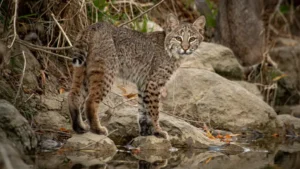





Leave your comment